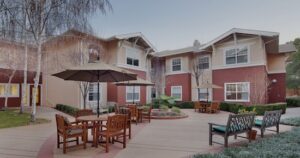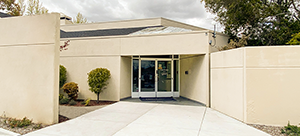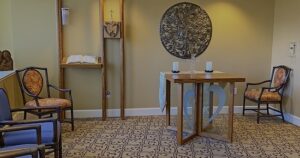Elder Life Line of Credit
Elderlife Financial and Second Act Financial Services are the two organizations offering a loan product specifically designed as a Senior Living Bridge Loan. These Bridge Loans were created to help older adults and their families with the cost of assisted living, home care, or skilled nursing on a short-term basis. Periods typically range up to 12 months, but sometimes longer.

This loan is unique in that up to six family members, or friends can share the cost of paying for an elderly individual’s care.
With a bridge loan, funds are directed to care providers such as assisted living communities or home care agencies. In addition to convenience, this also helps protect the older adult from misuse of funds. Some cash can also be provided directly to the family to help pay for relocation, incidental and unexpected costs. The loan is structured as a line of credit, and the interest rate is variable and tied to the prime rate.
When to Use a Bridge Loan
Senior Care Bridge loan products are designed to serve as a bridge until more permanent financial resources can be arranged. The following are several examples of situations where using an eldercare loan product makes economic sense.
- Entering Assisted Living – The costs of moving into assisted living can be high considering monthly fees, community (entrance) fees, and relocation expenses. A short-term loan gives a family the flexibility to absorb these costs and ease the burden until other funds become available over the next 6, 12, or even 18 months.
- Waiting for Veterans Benefits – The VA Pension for war-time veterans, when coupled with the additional Aid and Attendance benefit, can provide $1,000’s / month toward the cost of assisted living or home care. However, the average time for application processing is nine months. As a result, many families wait as long as 18 months to begin receiving benefits. In addition, this pension is retroactive, so a bridge loan works well to cover the waiting period.
- Selling a Home – It can take many months to prepare a home for sale, find the right buyer, and arrange financing. A bridge loan allows families to receive the best offer for the house rather than rushing a sale to have funds available for senior care.
- Alternative to a Reverse Mortgage – Reverse mortgages are a popular way to finance long-term care, provided at least one homeowner remains in the home. A reverse mortgage is not an option should both owners move from the home to assisted living. Additionally, an AARP study finds reverse mortgages make economic sense for homeowners who intend to use the proceeds for at least five years. A bridge loan makes sense for shorter loan periods.
Program Details / Pros & Cons
The Elderlife Line of Credit is a line of credit, so it works the same way a credit card does. A loan is approved for a total amount, but borrowers can draw on funds as needed and only pay interest on the amount used. Thus, a reasonably strong credit score is required for approval for a single borrower. However, the loan is also designed to allow multiple co-borrowers to share the cost of paying for the older adult’s care. Having multiple co-borrowers lessens the need for a strong credit score from any borrower since multiple individuals share the risk. The more co-borrowers, the easier it is to be approved, even if one co-borrower has poor credit. These loans also have a speedy approval process.
The most significant drawback of this option is the loan’s interest rate. The interest rate might be high, but it is very reasonable compared to a credit card or personal loan. Loans can be repaid at any time without penalty as an incentive for the older adult moving into their community.
A final benefit of a bridge loan is that it can eliminate complexity when applying for VA pensions or Medicaid. This is especially relevant if the alternative to a bridge loan is a family loan. VA pensions and Medicaid consider the applicant’s income and past asset transfers as eligibility factors. If not very carefully structured and documented, money accepted from family members to pay for care can be counted as income. This can hurt a VA application or result in a Medicaid denial. In addition, monies repaid to family members can be considered an illegal asset transfer by Medicaid. The federal government and the Department of Veterans Affairs recognize Elderlife’s financial product as a loan. Relative to a family loan, this can reduce complexity in the application process. If one is considering a VA pension or Medicaid in the future, it is strongly recommended they consult with a planning expert.
Eligibility Requirements for a Senior Care Bridge Loan
Credit Scores – Typically, a bridge loan is made with multiple family members as co-applicants. Thus, while credit scores are considered, a low credit score from any one co-applicant can be offset by the others. Aside from credit scores, other consideration factors include liquid assets, income, and home equity.
Alternative Funding Source – As the bridge loan is a short-term solution, the lender will want to know what other funding source will become available. Most commonly, this will be a lump sum from the sale of a home or a lump-sum retroactive payback from a veteran’s pension benefits.
Factors NOT Considered – Since the loan is typically given to the family and not the individual in need of care, age is not a factor in eligibility. Furthermore, the applicant’s health condition is not relevant to the approval process. Also, marital status does not impact eligibility. Finally, veteran status is only applicable to loan eligibility if the individual in need of care is waiting for approval of veterans’ benefits.
Benefit Details / Repayment Table
Most loans are provided as a line of credit but, in some circumstances, can be provided as a lump sum. Typical credit lines are from $20,000 to $30,000. Loan payments are made directly from the account to the care providers, including home care, assisted living, Alzheimer’s residences, skilled nursing homes, and even adult daycare providers.
These loans are intended as a bridge until an alternative funding source becomes available, such as selling a home or receiving a VA pension. Therefore, the monthly payments are structured to be very low.
Financial Planning Resources
Where to Begin
Contact us to learn more about using Assisted Living Bridge Loans at Elder Care Alliance Communities.


















